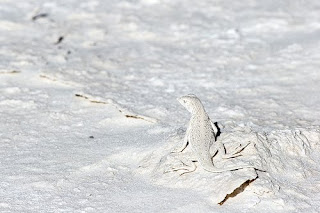Interesting, albeit speculative, hypothesis for the origins of the selective advantage associated with lactase persistence. Basically, looks like there is evidence for increased reliance on milk products and dairy animals at the same time as a sudden cold and dry spell - about 8,000 years ago.
Link to new story in Science
...on a related note, see a post by Razib pointing to a story about "How Middle Eastern Milk Drinkers Conquered Europe".
Forty-six of these international athletes had won medals at major international competition or held sprint world records.Nevertheless, another negative finding on the association between the ACTN3 fast twitch muscle fiber, "sprint" genotype and sprint phenotypes. In fact, two of the elite-elite Jamaican sprinters were homozygous for the slow-twitch variant! They acknowledge that the power to detect a difference here is pretty low because of the very low frequency of the ACTN3 R5777X polymorphism in West Africans... so much for personalized prediction of sports ability, at least for now. I say just look at your big toe... does it extend out farther than your second toe? if so, you could probably be pretty fast.
Given these results, Usain probably does lack the ACTN3 polymorphism, but on the other hand, he could be the one of the two out of the 46 elite-elite sprinters who is homozygous for it.
P.S. - gotta love the senior author's name!


